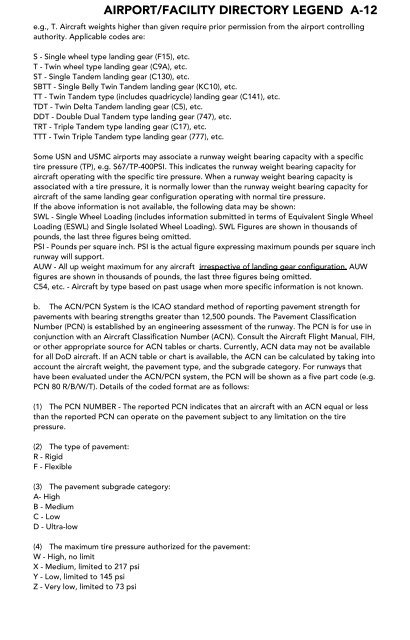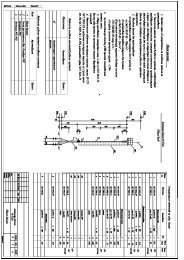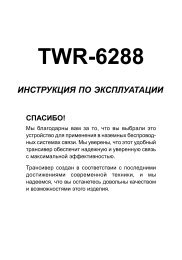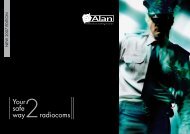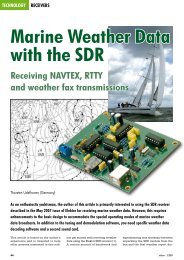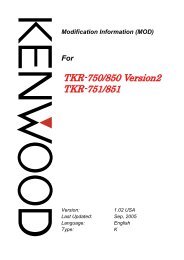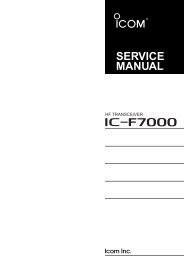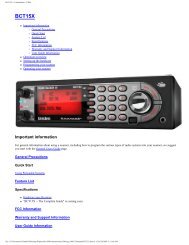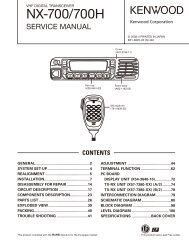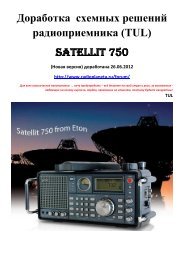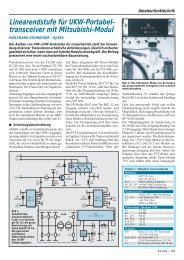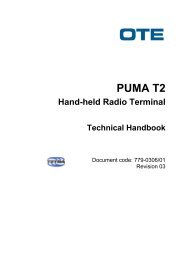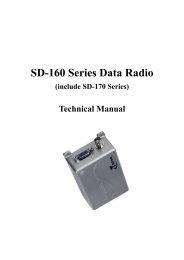Eastern Europe and Asia
Eastern Europe and Asia
Eastern Europe and Asia
Create successful ePaper yourself
Turn your PDF publications into a flip-book with our unique Google optimized e-Paper software.
AIRPORT/FACILITY DIRECTORY LEGEND A-12<br />
e.g., T. Aircraft weights higher than given require prior permission from the airport controlling<br />
authority. Applicable codes are:<br />
S - Single wheel type l<strong>and</strong>ing gear (F15), etc.<br />
T - Twin wheel type l<strong>and</strong>ing gear (C9A), etc.<br />
ST - Single T<strong>and</strong>em l<strong>and</strong>ing gear (C130), etc.<br />
SBTT - Single Belly Twin T<strong>and</strong>em l<strong>and</strong>ing gear (KC10), etc.<br />
TT - Twin T<strong>and</strong>em type (includes quadricycle) l<strong>and</strong>ing gear (C141), etc.<br />
TDT - Twin Delta T<strong>and</strong>em l<strong>and</strong>ing gear (C5), etc.<br />
DDT - Double Dual T<strong>and</strong>em type l<strong>and</strong>ing gear (747), etc.<br />
TRT - Triple T<strong>and</strong>em type l<strong>and</strong>ing gear (C17), etc.<br />
TTT - Twin Triple T<strong>and</strong>em type l<strong>and</strong>ing gear (777), etc.<br />
Some USN <strong>and</strong> USMC airports may associate a runway weight bearing capacity with a specific<br />
tire pressure (TP), e.g. S67/TP-400PSI. This indicates the runway weight bearing capacity for<br />
aircraft operating with the specific tire pressure. When a runway weight bearing capacity is<br />
associated with a tire pressure, it is normally lower than the runway weight bearing capacity for<br />
aircraft of the same l<strong>and</strong>ing gear configuration operating with normal tire pressure.<br />
If the above information is not available, the following data may be shown:<br />
SWL - Single Wheel Loading (includes information submitted in terms of Equivalent Single Wheel<br />
Loading (ESWL) <strong>and</strong> Single Isolated Wheel Loading). SWL Figures are shown in thous<strong>and</strong>s of<br />
pounds, the last three figures being omitted.<br />
PSI - Pounds per square inch. PSI is the actual figure expressing maximum pounds per square inch<br />
runway will support.<br />
AUW - All up weight maximum for any aircraft irrespective of l<strong>and</strong>ing gear configuration. AUW<br />
figures are shown in thous<strong>and</strong>s of pounds, the last three figures being omitted.<br />
C54, etc. - Aircraft by type based on past usage when more specific information is not known.<br />
b. The ACN/PCN System is the ICAO st<strong>and</strong>ard method of reporting pavement strength for<br />
pavements with bearing strengths greater than 12,500 pounds. The Pavement Classification<br />
Number (PCN) is established by an engineering assessment of the runway. The PCN is for use in<br />
conjunction with an Aircraft Classification Number (ACN). Consult the Aircraft Flight Manual, FIH,<br />
or other appropriate source for ACN tables or charts. Currently, ACN data may not be available<br />
for all DoD aircraft. If an ACN table or chart is available, the ACN can be calculated by taking into<br />
account the aircraft weight, the pavement type, <strong>and</strong> the subgrade category. For runways that<br />
have been evaluated under the ACN/PCN system, the PCN will be shown as a five part code (e.g.<br />
PCN 80 R/B/W/T). Details of the coded format are as follows:<br />
(1) The PCN NUMBER - The reported PCN indicates that an aircraft with an ACN equal or less<br />
than the reported PCN can operate on the pavement subject to any limitation on the tire<br />
pressure.<br />
(2) The type of pavement:<br />
R - Rigid<br />
F - Flexible<br />
(3) The pavement subgrade category:<br />
A- High<br />
B - Medium<br />
C - Low<br />
D - Ultra-low<br />
(4) The maximum tire pressure authorized for the pavement:<br />
W - High, no limit<br />
X - Medium, limited to 217 psi<br />
Y - Low, limited to 145 psi<br />
Z - Very low, limited to 73 psi


